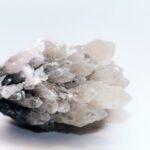Welcome to the fascinating world of gemstone identification and classification! In this article, we delve into the realm of gemology, where the expertise of seasoned gemologists shines. As a trusted authority in the jewelry industry, my aim is to guide you through the intricate process of mastering gemstone identification and classification. Whether you are a gem enthusiast or a professional in the field, prepare to unlock a treasure trove of knowledge, insights, and expert insights. Let’s embark on a journey that will unravel the mysteries of gemstones and illuminate their unique characteristics.

Gemstone Identification and Classification
Gemstone identification and classification are essential skills for any seasoned gemologist. With years of experience in the jewelry industry, I have honed my expertise in accurately determining the properties and origins of various gemstones. In this article, I will share valuable insights and expert tips on how to master the art of gemstone identification and classification.
Understanding the Four Cs
The “Four Cs” of gem grading – color, clarity, cut, and carat (weight) – form the foundation of gemstone identification and classification. Each of these factors contributes to the rarity and value of a gemstone.
Color: The color of a gemstone is a vital characteristic when identifying and classifying it. Different gemstones have distinct color properties, making comparison with known examples crucial. From the deep blue of sapphires to the vibrant green of emeralds, mastering color identification is essential.
Clarity: Evaluating the clarity of a gemstone involves examining its internal characteristics, such as inclusions or blemishes. The absence of flaws contributes to a gemstone’s value. Utilizing a chart or reference manual can help you compare the clarity of a gemstone with industry standards.
Cut: The cut of a gemstone refers to how well it has been shaped and faceted. A well-cut gemstone enhances its brilliance and overall appeal. Examining the symmetry and proportions of a gemstone’s cut can provide valuable clues about its origin and quality.
Carat (Weight): The carat weight of a gemstone directly influences its value, with larger gemstones often being more valuable. Utilizing a gemological scale or balance can help you accurately determine the carat weight of a gemstone.
Mastering the Four Cs is crucial for proper gemstone identification and classification. By understanding these key characteristics, you’ll be able to assess a gemstone’s quality and rarity, providing valuable insights for jewelry consumers and professionals.
Remember: “Color, clarity, cut, and carat – the Four Cs of true gemstone beauty.”
Methods for Gemstone Identification
When it comes to identifying gemstones, various methods are available to ensure accuracy and authenticity. Here are a few techniques that can assist you in your journey:
Visual Comparison: Using a chart or reference manual, compare the gemstone in question with known examples. Note the similarities and differences in color, clarity, cut, and overall appearance.
Online Resources and Apps: Utilize online resources and smartphone apps specifically designed for gemstone identification. These tools often provide detailed information, including images and descriptions of a wide range of gemstones.
Surface Examination: Touch and feel the surface of the gemstone. Authentic gemstones should have a smooth and hard surface, free from rough or sandy textures. Malleability, or lack thereof, can also provide clues about a gemstone’s authenticity.
Gemological Society: Websites such as gemsociety.org offer valuable guidance, articles, and expert insights into gemstone identification and classification. They provide a platform for gem enthusiasts, professionals, and newcomers to learn and deepen their knowledge in the field.
Expert Tip: “When identifying gemstones, trust your instincts, and let the gem’s true nature reveal itself.”
Dealing with Synthetics, Imitations, and Assembled Stones
In the world of gemstones, it is crucial to be vigilant and knowledgeable about synthetics, imitations, and assembled stones. These are not natural gemstones and often possess different properties or features. Here are a few things to watch out for:
Synthetics: Synthetic gemstones are created in laboratories and exhibit properties similar to their natural counterparts. They can often be difficult to differentiate from natural gemstones without specialized equipment. Proper gemological training and equipment are necessary for accurate identification.
Imitations: Imitation gemstones are man-made materials designed to mimic the appearance of natural gemstones. They can include glass, plastic, or other materials. Close observation of a stone’s color saturation, clarity, and overall appearance can reveal imitations.
Assembled Stones: Assembled stones are created by combining two or more smaller gemstone pieces. These stones often have visible joints or glued surfaces. Close examination and magnification can help identify these assembled stones.
Remember: “In the world of gemstones, authenticity is everything. Respect the natural beauty of genuine gemstones.”
To delve deeper into the world of gemstone identification and classification, I recommend visiting websites such as thediamondauthority.org and wikihow.com. These platforms offer step-by-step guides and valuable information, ensuring you are equipped with the knowledge to distinguish and appreciate gemstones of all kinds.
In conclusion, gemstone identification and classification require a keen eye for detail, extensive knowledge of gemological principles, and the utilization of various identification techniques. By mastering the Four Cs, utilizing visual comparison, online resources, and understanding the complexities of synthetics and imitations, you can become an expert in gemstone identification and classification.
Expert Advice: “Harness the power of knowledge and uncover the hidden treasures within gemstones.”
Gemstones have fascinated humans for centuries, with their mesmerizing colors and unique properties. If you’re someone who loves uncovering scientific facts about gemstones, then you’re in for a treat! We have compiled a list of intriguing information that will make you see these precious gems in a whole new light. From the formation process to their physical and metaphysical properties, there’s so much to learn and appreciate about gemstones. So, without further ado, click here to dive deep into the scientific facts about gemstones. Hurry up and satisfy your curiosity!/../scientific-facts-about-gemstones

FAQ
What are the “Four Cs” of gem grading?
The “Four Cs” of gem grading are color, clarity, cut, and carat (weight). These properties determine the rarity and value of a gemstone.
How can I identify a gemstone?
To identify a gemstone, you can consider its color, clarity, cut, and carat (weight). You can also use a chart or reference manual to compare the gemstone with known examples, or utilize online resources and apps for identification.
How can I determine the malleability of a gemstone?
You can determine the malleability of a gemstone by feeling its surface. Gemstones should have a smooth and hard surface, not a rough or sandy texture.
How can I distinguish between natural gemstones and synthetics, imitations, or assembled stones?
To distinguish between natural gemstones and synthetics, imitations, or assembled stones, it is important to observe their properties and features. Synthetic, imitation, or assembled stones may have different properties or features compared to natural gemstones.
Where can I find more detailed guidance on gem identification and classification?
For more detailed guidance on gem identification and classification, you can visit websites such as gemsociety.org, thediamondauthority.org, and wikihow.com. These websites provide valuable insights and information on gemstones.
- China II Review: Delicious Food & Speedy Service - April 17, 2025
- Understand Virginia’s Flag: History & Debate - April 17, 2025
- Explore Long Island’s Map: Unique Regions & Insights - April 17, 2025
















